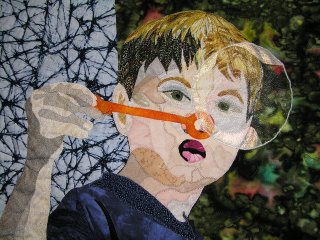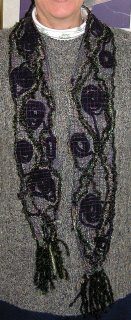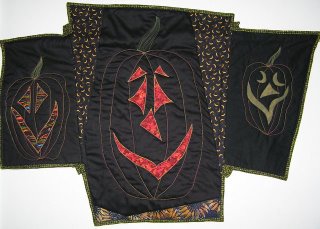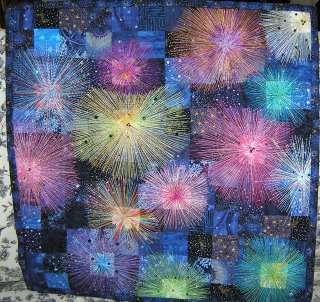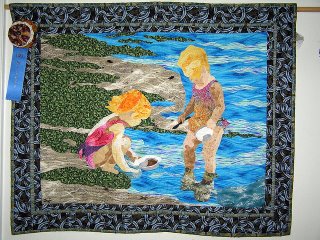
I designed this quilt myself, based on a photograph. Development took the longest time in figuring out how to go from the photo to an applique quilt pattern. (I love my light box!)
There are some great resources out there :
Charlotte Warr Anderson's books (if you can find them)
Marilyn Belter now has a great book on Fabric Portraits as well (though it hadn't been published until after I had this completed).
Another tip on this process : Make your master pattern 8-1/2 x 11 inches. Then it's a very simple, cheap, easy and quick process to take it to a copy shop and have them enlarge it to your desired pattern size (between $2-4) (up to 3 feet).
I used a fusuble web applique method, stitching the edges down with invisible thread. Then I started threadpainting.
* Metalic green thread on the seaweed makes it look like it's wet and glistening in the sun.
* Someone from my art quilt group also suggested using glitter paint to make the sand sparkle. This worked really well on the water, too!
I had originally done this quilt for a show in my hometown this summer. The theme was "On the Lake." At my local Quilt Guild show this fall, this quilt won Viewer's Choice for the Art Quilt Division. This is the first time I've ever won anything at a quilt show!

 Here's the full view. I finished the background quilting. I still need to cut it down to size and add a binding.
Here's the full view. I finished the background quilting. I still need to cut it down to size and add a binding.
